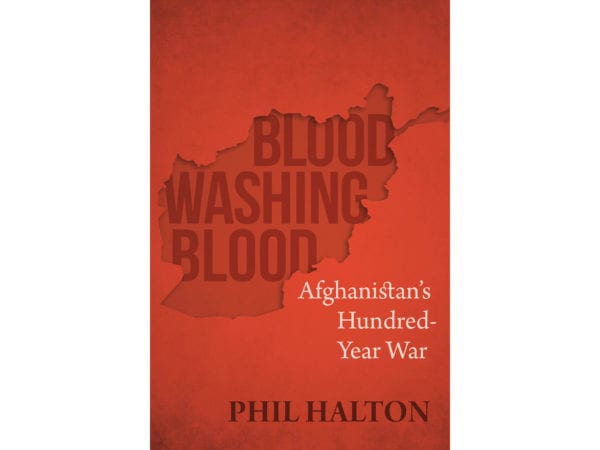 Afghanistan is often imagined by North Americans to be either an inferno of endless turmoil and repression of women or a rest stop for hippies seeking enlightenment, drugs, and groovy carpets. In our popular imagination, the country remains frozen in a narrow framework of misperception and dismissal as a failed state.
Afghanistan is often imagined by North Americans to be either an inferno of endless turmoil and repression of women or a rest stop for hippies seeking enlightenment, drugs, and groovy carpets. In our popular imagination, the country remains frozen in a narrow framework of misperception and dismissal as a failed state.
Canadian novelist Phil Halton (This Shall Be a House of Peace), a former military officer and enthusiastic world traveller, aims to change that misconception with his political history, Blood Washing Blood, a reflection on why Afghanistan seems mired in a pattern of bloodshed, corruption, and hopelessness. By linking the country’s present challenges to policy decisions made a century ago by leader Amānullāh Khan, Halton illustrates how the gap has continually widened between seemingly beneficial policy intentions in Kabul and their failure to take root in largely rural areas where the national capital seems as distant as the moon.
Halton argues that Afghanistan’s 20th-century leaders fell short in consolidating a nation state by consistently failing to respect traditional rural systems of governance, misunderstanding the role of women and children in hardscrabble agricultural economies, and enforcing uniform value sets and colonial boundaries that inevitably generate armed resistance.
Halton lived in Afghanistan and interviewed many Afghans for the book and is careful to avoid one-dimensional portrayals. Instead, he presents the logical context necessary to examine a broad range of issues, among them Afghanistan’s role as a major producer of opium and hashish, the history of the Loya Jirga consensus decision-making model, debates over religious versus secular education, the ascent of the Taliban following the Soviet Union’s chaotic military withdrawal, and the country’s descent into interminable civil strife.
Chapters that follow the rise and fall of national leaders sometimes read as a “great men of history” inventory, detailing how each man proved tone-deaf to the needs of an incredibly diverse population for which one-size-fits-all policies remain a recipe for conflict. Halton ably documents why the imposition of centralized governing structures has failed a country with 14 major ethnic groups; countless linguistic, cultural, and religious identities developed over millennia; and a daunting geography that informs everything from crop choices to transport routes to the fate of invading armies both in the distant past (Alexander the Great and Genghis Khan) and more recent present (the Russians, British, and Americans).
In addressing the headline-grabbing question of women’s rights in Afghanistan, Halton includes very few female voices. He also occasionally veers into orientalism, using the much-contested term “warlord” to describe post-9/11 militia leaders and imposing a Eurocentric lens to describe various individuals as “poorly educated.”
While Blood Washing Blood is a good overview of the costly cycle of errors over the last 100 years, it could have benefited from more attention to pre-1919 events that shaped subsequent efforts to “modernize” a land deeply rooted in historical memory. There are welcome hints at how Afghanistan’s fate has been exploited by colonial powers and shaped by significant historical events (including world wars, the Indian independence movement, the creation of Pakistan, fall of the U.S.S.R., and Iranian revolution of 1979), but these contexts deserve a more extensive analysis in order to not mislead readers into solely blaming Afghans for their current state of affairs.
Despite cataloguing much misery, Halton concludes hopefully (though perhaps too briefly) by celebrating grassroots, women-led responses to war-weariness that signal the potential for reconciliatory change. Such initiatives serve as a critical reminder that the Afghan people (and not foreign militaries or charitable organizations) will ultimately determine their own fate, even amid the ongoing regional and global power games that place the country in a geopolitical bull’s eye.
 Contact us via email
Contact us via email

